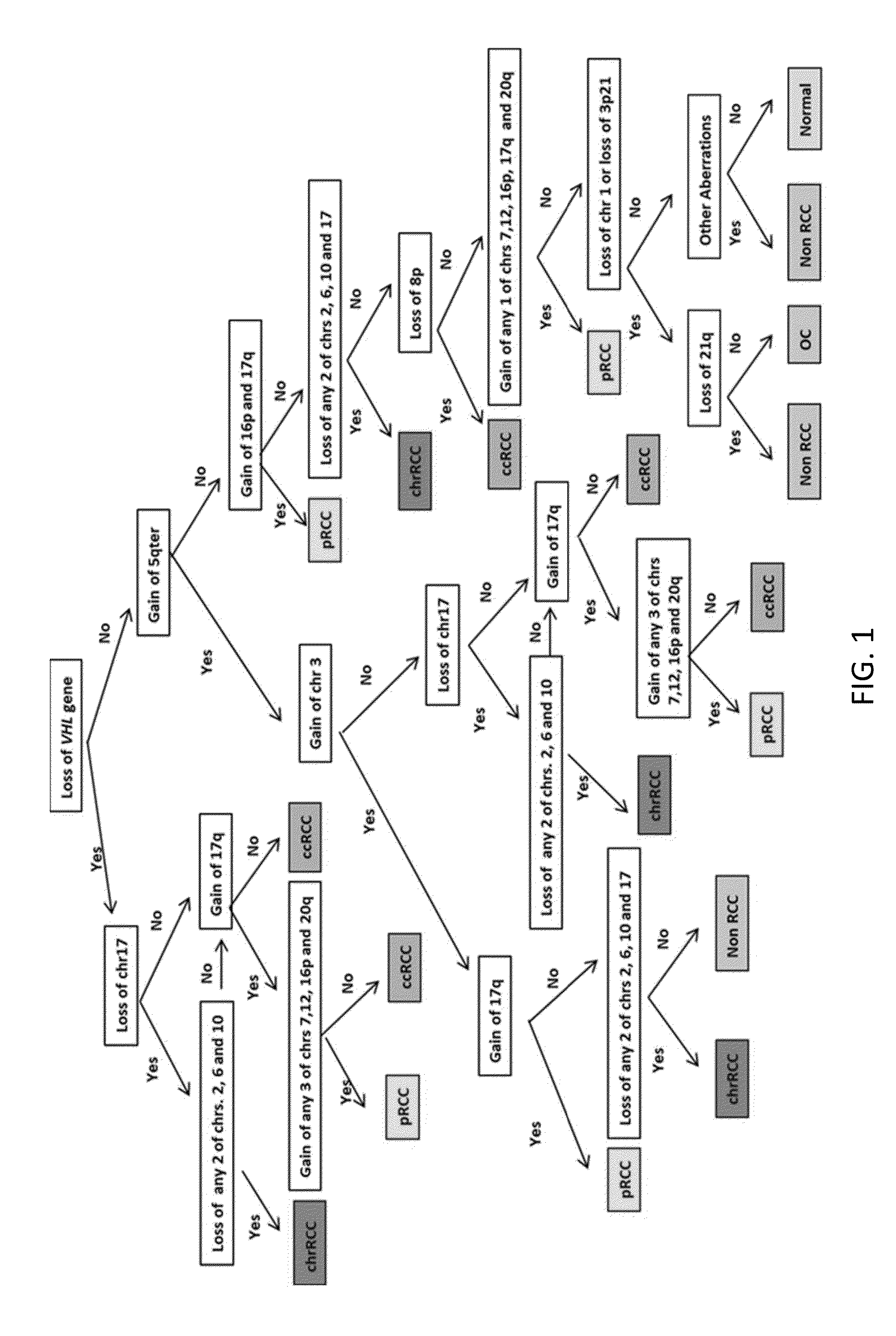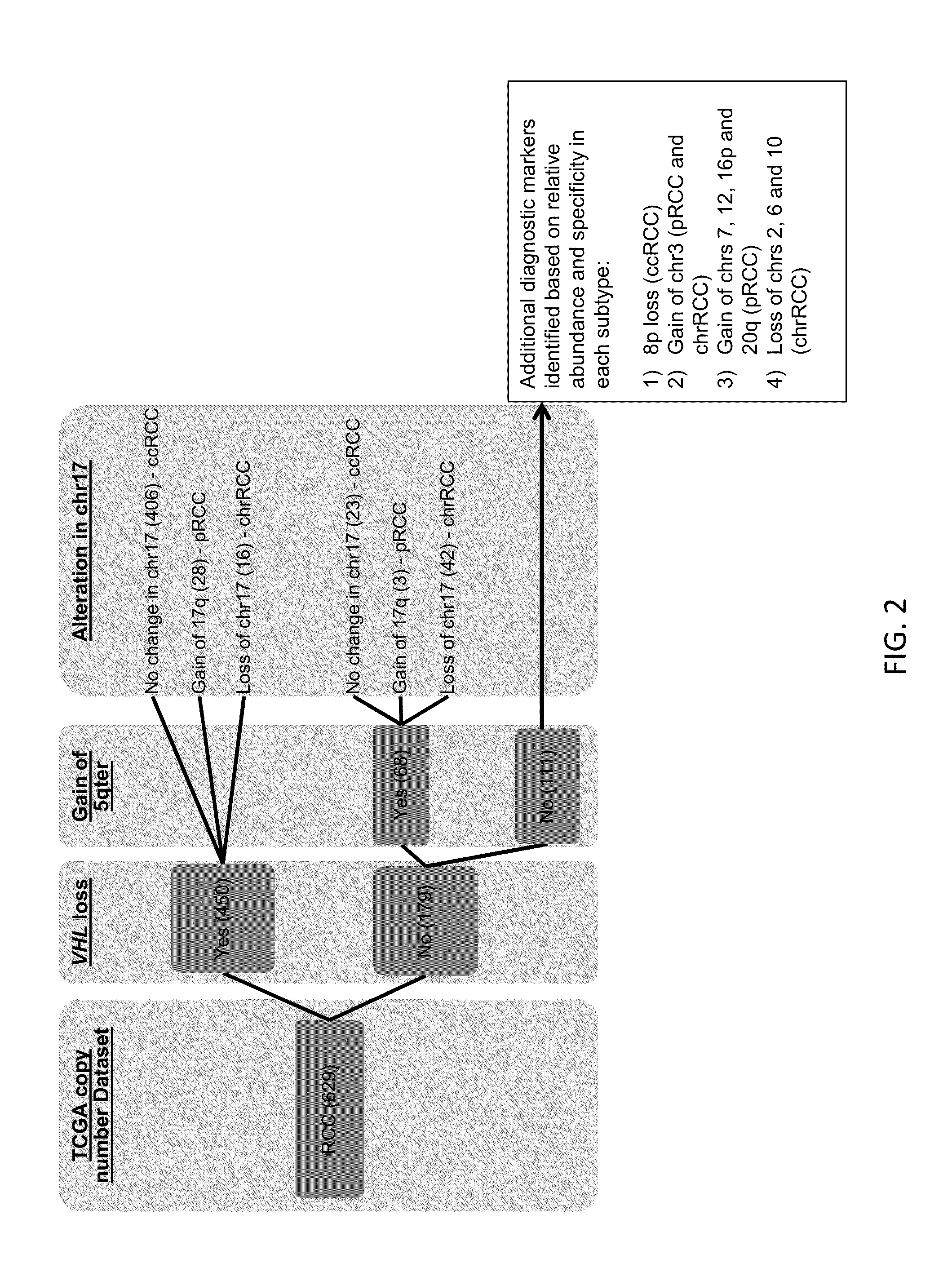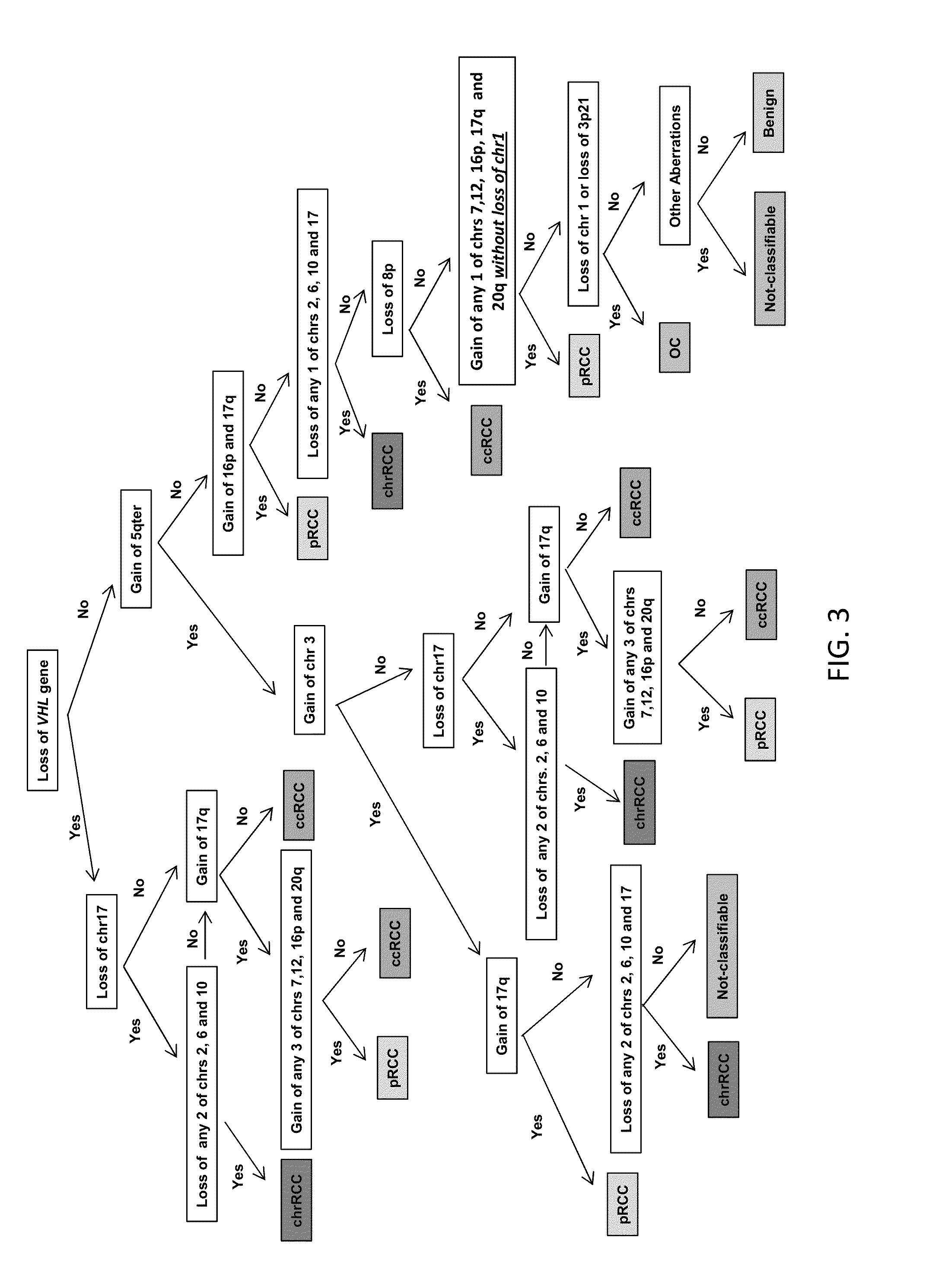Methods and tools for the diagnosis and prognosis of urogenital cancers
a technology for urogenital cancer and diagnosis, applied in the field of cancer, can solve the problems of poor disease outcome, over-expression of prostate cancer cells, and major health risks of genital cancer types for the public, and achieve the effects of improving the diagnosis and treatment process
- Summary
- Abstract
- Description
- Claims
- Application Information
AI Technical Summary
Benefits of technology
Problems solved by technology
Method used
Image
Examples
example 1
Development of a Microarray for Diagnosis and Prognosis of Urogenital Cancers
[0114]A literature survey was performed to facilitate development of tools (particularly the microarray—e.g., the urogenital cancer array, also known as the UroGenRA® urogenital cancer array as described herein) for the use in the diagnosis and prognosis of specific urogenital cancers including prostate, kidney, and bladder cancers. Initially, an evaluation of the literature was performed for molecular genetic and cytogenetic applications in the study of gynecological cancers. These studies utilized chromosomal CGH, FISH, array CGH (BAC and oligonucleotide), SNP-array, ROMA, and / or PCR-based assessment of single gene copy numbers. Across these studies vastly differing technologies were utilized and even within technologies, different platforms were used, making direct comparisons and extraction of data difficult. In addition, different cut-offs and algorithms were used for data analysis again complicating c...
example 2
A Preliminary Decision Tree for the Diagnosis of Renal Cortical Neoplasms
Description of the Disease
[0123]In 2012, nearly 64,770 new cases of kidney cancer are estimated in United States and about 13,570 deaths from the disease are predicted to occur [1]. Renal cell carcinoma (RCC) is the most abundant form of kidney cancer, and despite being the most lethal can be cured by surgery if diagnosed at an early stage. RCC arises in the renal cortex and is the predominant malignant type of renal cortical neoplasm as shown in Table 9.
TABLE 9Renal Cortical Neoplasm Histologic Subtype and FrequencyRenal Cortical Neoplasm Histologic SubtypeFrequencyBenignOncocytoma (OC)6-9%Papillary adenomaMetanephric adenomaNephrogenic adenofibromaMalignantClear cell (conventional) RCC (ccRCC)60-65%Papillary RCC (pRCC)13-15%Chromophobe RCC (chrRCC) 6%Collecting duct carcinomaMedullary carcinomaTubulocystic RCCRCC, unclassified 7%Mucinous tubular and spindle cell carcinomaTranslocation-associated carcinomasTum...
example 3
Diagnostic Classification of Renal Tumors Using a Copy Number-Based Decision Tree Algorithm
Abstract
[0181]Accurate diagnostic discrimination of major renal cortical neoplasms (clear cell, papillary, chromophobe and oncocytoma subtypes) is not only useful for predicting prognosis of the disease but also to plan appropriate treatment strategies which include active surveillance, cryoablation, partial and radical nephrectomy followed by with or without systemic therapy. Diagnosis solely by histopathology could often be challenging both in percutaneous needle biopsies as well as in surgically resected specimens. The aim of this study is to utilize the genomic imbalance associated with the major renal tumor subtypes to achieve correct diagnosis. Using TCGA (The Cancer Genome Atlas) copy number dataset, prior FISH study and published literature, a total of 15 genomic markers were identified. A decision tree algorithm was developed based on these genomic markers to assist in renal tumor sub...
PUM
| Property | Measurement | Unit |
|---|---|---|
| Mass | aaaaa | aaaaa |
Abstract
Description
Claims
Application Information
 Login to View More
Login to View More - R&D
- Intellectual Property
- Life Sciences
- Materials
- Tech Scout
- Unparalleled Data Quality
- Higher Quality Content
- 60% Fewer Hallucinations
Browse by: Latest US Patents, China's latest patents, Technical Efficacy Thesaurus, Application Domain, Technology Topic, Popular Technical Reports.
© 2025 PatSnap. All rights reserved.Legal|Privacy policy|Modern Slavery Act Transparency Statement|Sitemap|About US| Contact US: help@patsnap.com



